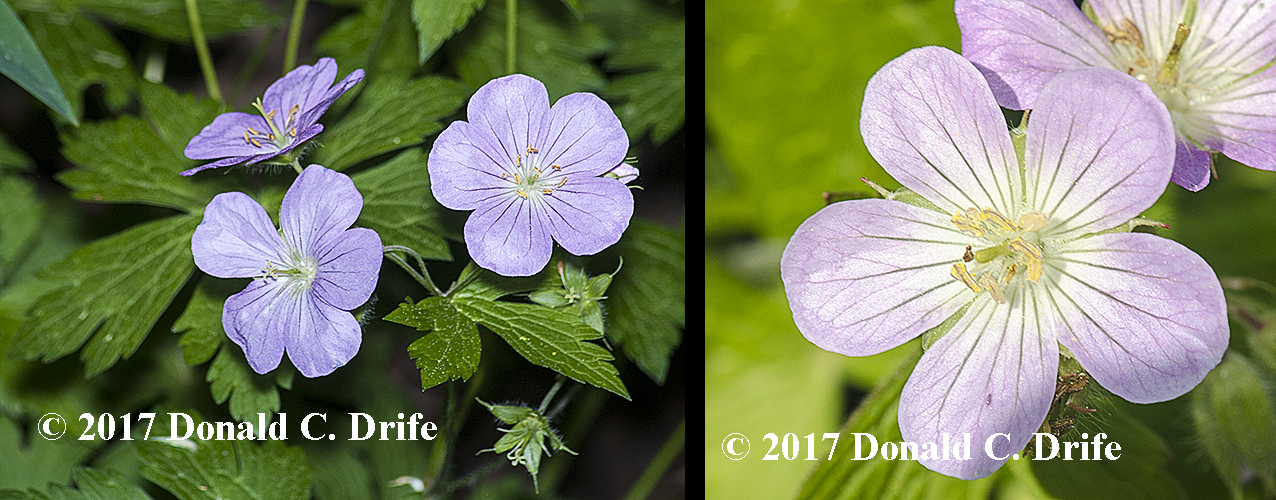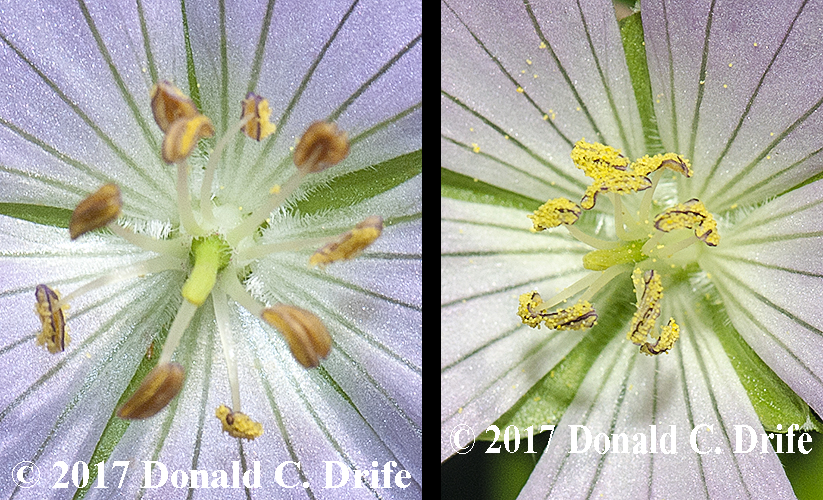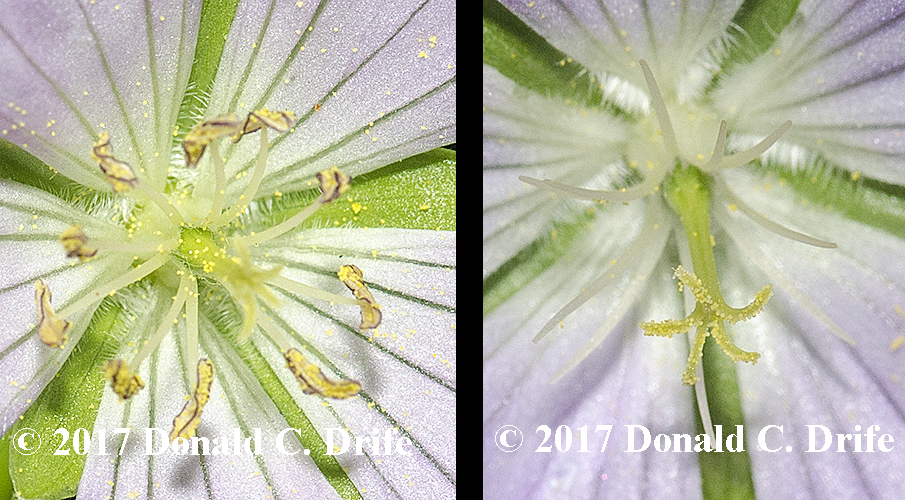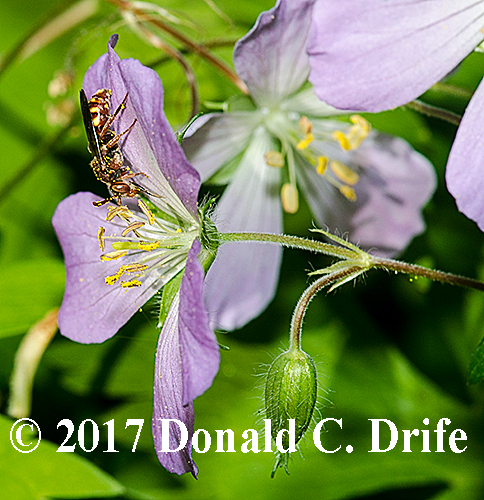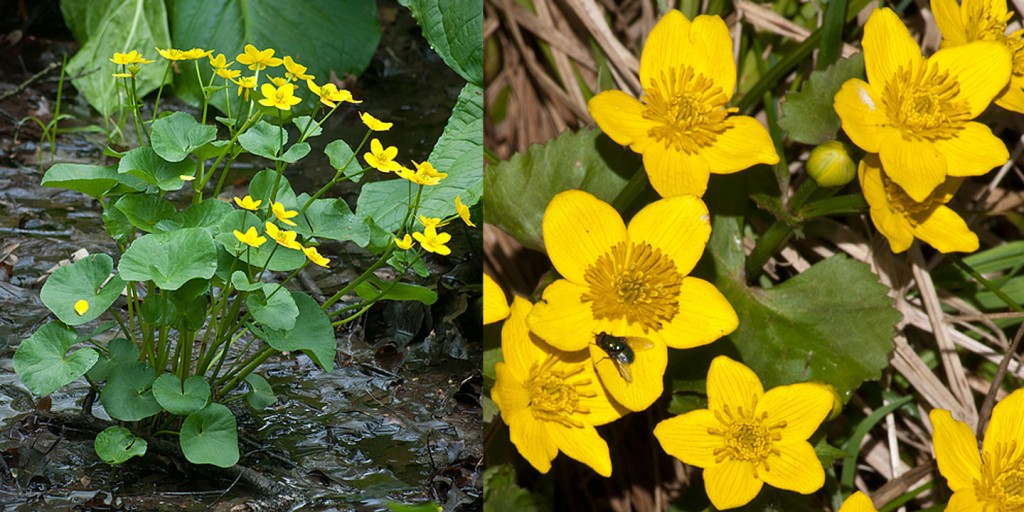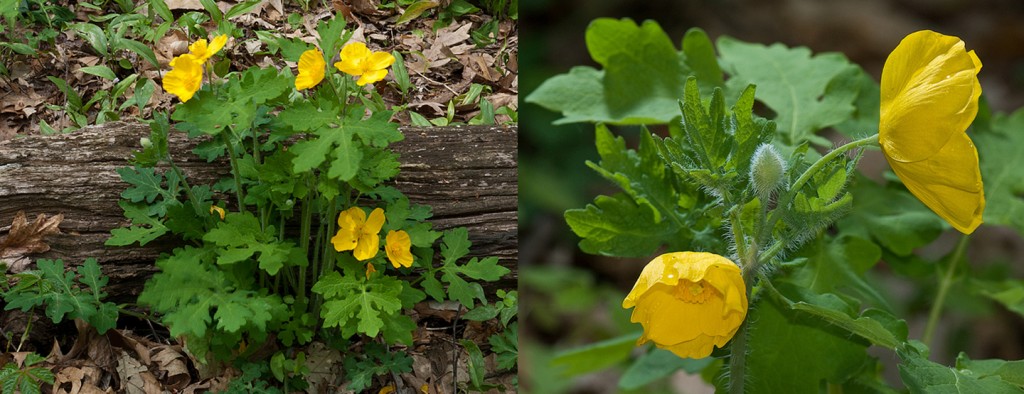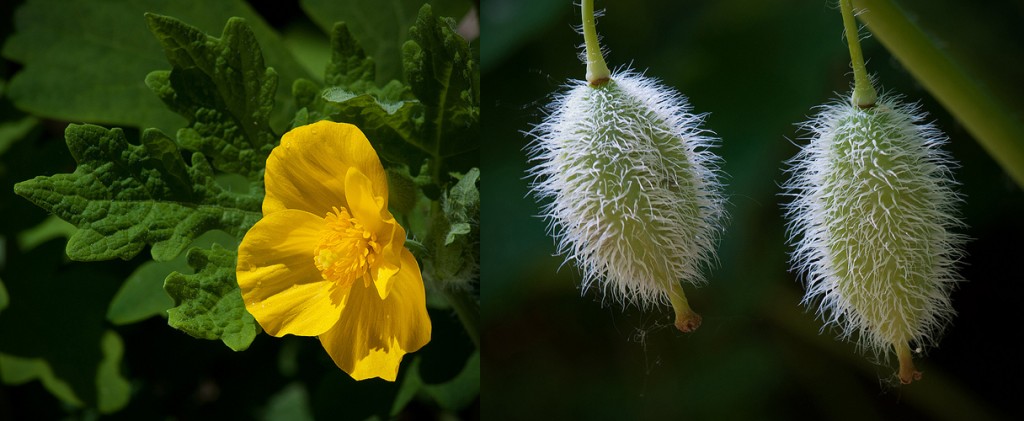Wild Geranium (Geranium maculatum) is a common woodland species in southern Michigan. Heather Holm in her book Pollinators of Native Plants explains the plant’s mechanism for insuring cross-pollination. The outer anthers develop first and discharge pollen. Next the inner anthers discharge pollen. This two-step process allows for a longer period of pollen production. Only after the anthers dry up does the stigma become ready to accept pollen. I photographed a selection of flowers in Tenhave Woods in Royal Oak on May 24th. Flowers were in all stages of development from bud through the beginning of seedpod formation. While the plants did not strictly follow Holm’s description, the pollen had developed first in most plants, and plants lacked pollen when the stigma was ready to receive pollen.
While photographing Geraniums I found a Cuckoo Bee (Nomada sp.) pollinating the flowers. Holm in her book explains that Cuckoo Bees “lay their eggs in the nests of ground-nesting bees.” This one was feeding on nectar, moving rapidly from flower to flower.
In the future, I will pay closer attention to how pollen develops in different plant species. I find it interesting to observe the varied mechanisms by which plants maintain genetic diversity.
Copyright 2017 by Donald Drife
Webpage Michigan Nature Guy
Follow MichiganNatureGuy on Facebook

